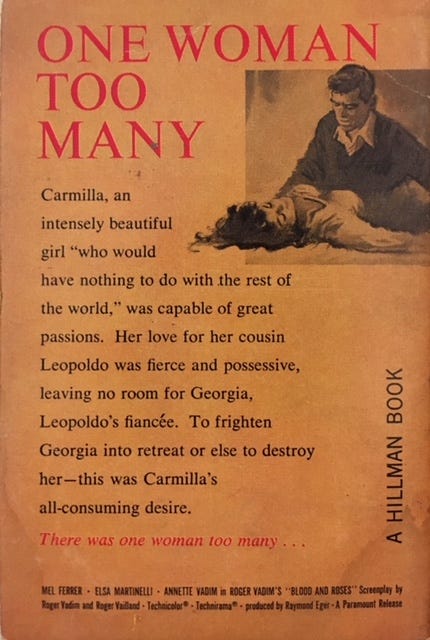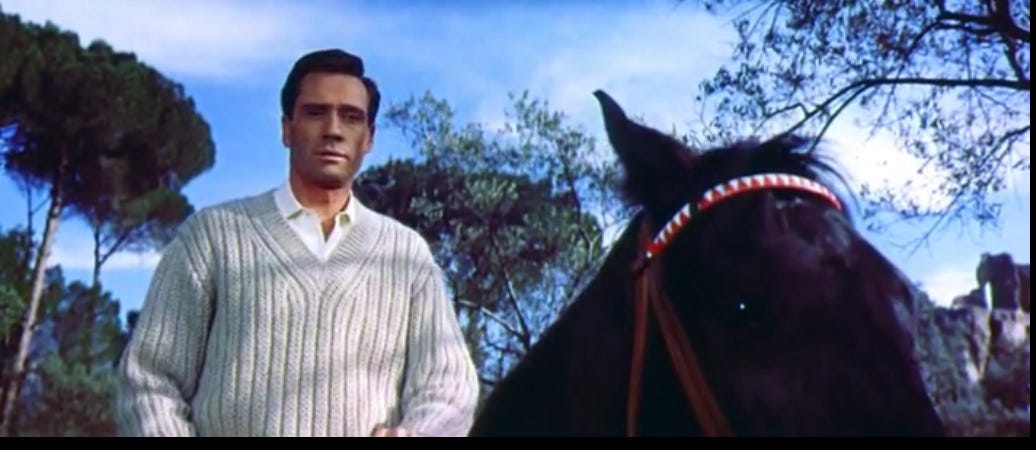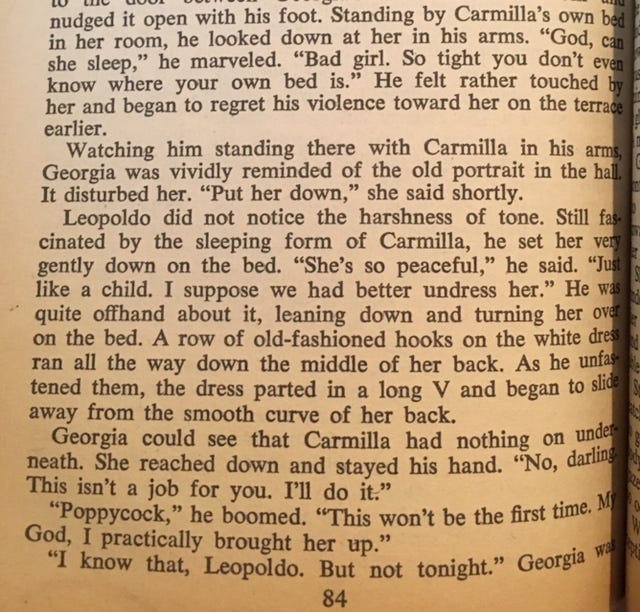oh what if
what if
what if I use this seclusion time to leash-train Theo and promenade her down the echoing empty streets under the magnolia trees! what if I lead her under harness through the orangerie and down around the sunken pool and the rosebushes of Dumbarton Oaks, when the bees buzz free and the grass grows unbeaten-back by groundskeepers and the herb-garden full of rare lace-mints! She has the most delicate ankles, just a bit obscured now that her fur has grown shaggier with her good rude health and healthy rudeness. The fur on the soles of her bony back feet, like a dense black carpet!—What a dream to have feet like that, to have shell-pink ears with fine black outlines around them, to have the single eye.
Drifting pink magnolia petals falling down on the smoky black M of her forehead!
I cannot do this, it is illegal now. All the parks are closed and the trees are locked away, the caterpillars and the houseless hounds and the meanest squirrels own the earth, and if I bring a bunch of tulips indoors I cannot let my cat to frolic and sport among them. [2]
When she was newer to me, briefly I thought of calling Theodora Camilla after the Secret History Camilla, remote Camilla who wraps her throat in a white silk scarf, whom the boys find alone and tranquil after a slaughter, hands clean and hair wet blood-dipped red. Carmilla is even more apt: Theo is wicked, feminine, languid, likes to bite and wants to be friendly. Too late for that now.
I said a little while ago I would write about Le Fanu’s Carmilla but I have been too sick, ill, fatigued, dizzy, seized with a wasting disease —I have wasted a LOT of time under its influence. My liver & lights are just fine and the worst is past, I tried to cough out my lungs but was unable to. but I get the headache still, and I hate the headache, the invisible enemy. It’s important to keep to a schedule under bad conditions & that is why I sneeze continuously for 45 minutes every morning, no more, no less. “Oh but sneezing isn’t a recognized symptom of—” yes, child, yes, settle down. I am also allergic to my agonies.
I miss the fever, the fever was a pleasure, the fever was a rushing river bearing me swiftly downstream in the dark to that beautiful land of weeks-ago Manhattan hotel rooms wherein it is neither day nor night but only and always International Women’s Day, airless chambers where dust does not stir & Housekeeping never knocks, where Miss Congeniality plays on a loop on the Far-seer alternated with Laws and Order, and all that is required of you is that you lie back fainting in the pillows and allow Sandra Bullock to minister to your weakness, as in the distance you hear Olivia Benson shouting threats to detain each one of the tiny viruses assaulting your dark passageways—The handcuffs are too large, you weep, the viruses too small and too numerous; but she shouts at you to perform a citizen’s arrest and MAKE them respect the law until she gets there to take hold of the situation. When you awaken, no one will believe you.
Now, the beloved fever is gone—gone!—all that is left to me is slow-thinking dreariness and sneezes. I waft from room to room to room, and then I am out of rooms. I have searched the internet’s finest thing-sellers from stem to stern but everyone is out of rooms, you cannot order more rooms for any amount of money. Someone is hoarding the rooms! they must be called to account. Outside the mossy greens and pink petals of Spring call to me but I, wretched disease carrier, must not follow them out unless I turn myself into a bat first to disguise my wretchedness. but my sneezes would give me away. Go reread Carmilla and have your own dreamy thoughts about it, and in the meantime I will talk to you about BLOOD AND ROSES.

(Above: Carmilla/Millarca, demonstrating bad mask technique)
The film BLOOD AND ROSES is Roger Vadim’s 1960 misapprehension of Carmilla and it is lousy and brilliant. It has a haunting, twanging musical theme by Jean Prodromidès and it has two great sequences, brilliant ones, unforgettable ones; one in the tomb, and one in the dream. Why then is it lousy? The fatal crack in the glass is not how boring it is for whole quarter-hours at a time, nor the clonk clonk of redundant narration overlaid on certain scenes in certain versions by someone who did not trust Annette Strøyberg’s beautifully inexpressive stone-face, which, Garbo-style, tells you everything you want to tell yourself. That can be endured. The problem is that it has a Mel Ferrer wedged into it like a badger trapped in a grandfather clock. You are watching, you want to know what time it is in Hades, you want to hear the tolling of the grave and melancholy bell, low and sweet, but you have to strain to catch the sound over the rustling and flolloping of some ungainly animal trying to make himself at home with no care for how absolutely disruptive he is to the clockworks.
And why is he in there at all? It takes a Roger Vadim to ask the question: What if the most famous lesbian vampire in vampire history was in love with film’s most unsavory puppeteer? [1] The answer to that What if? is that no one would believe it for a second. Take away the impossible (that Annette Strøyberg-Vadim/Carmilla/Millarca would wish for this ding-dong’s attentions—that Elsa Martinelli/Georgia would suffer his attentions unprotesting) and whatever remains, no matter how improbable, must be the case (he isn’t really there, you merely imagined it.)
To save both me and you the trouble of me recapping the movie, let me just show you the back cover of its paperback novelization; it says all that needs to be said:

(Above: A pack of lies!)
Regarding Mel Ferrer, look: listen. Listen, look, I wouldn't talk this way about any hateable man living, because there is always the possibility that a live man reads my newsletter and might have his feelings hurt. Film stars are still human beings; but acting and movement choices, icons and personas, may be considered and described separately from the human person who incarnated them, so long as the persons are long dead and can't hear you, is my opinion. You can take it as understood that “Mel Ferrer” is my object of hatred, not Mel Ferrer the human man who may or may not have been pleasant company when the cameras were put away: that’s none of my business. If you worry that ghost Mel Ferrer may yet have his feelings hurt and you think you might hold that against me, you had better skip the next bit. I am too sick to worry about giving offense to ghosts, me.
because when you watch BLOOD AND ROSES / ET MOURIR DE PLAISIR / …UND VOR LUST ZU STERBEN — it was badly dubbed into several languages, maybe including the one it was filmed in, I have only seen it in German, you can watch that version here for free and I urge you to watch it immediately, you don’t need to know German to watch the two unimaginably good scenes, and for the rest of the film I think it’s better if you don’t know what they’re saying —
—when you watch it, you burn with rage at Mel Ferrer with his loose-jawed smirks and his big man-ham-handling hands. He, Mel Ferrer, Leopoldo von Karnstein, has one way of touching a woman: the clenched fist around the upper arm, his own arm bent fist-to-shoulder and kept close to the body, so that the person he clenches must tilt and sway and bend to his direction; the way you haul around a child, if you are violent with children. In one scene he grabs his own fiancee this way—first jerks her, Elsa Martinelli, in close, then pushes her back the other way in front of him into her room. He moves like a mime, with a bad dancer’s falsity of gesture, always too much and too empty. Blameless, innocent, Martinelli resists nothing, radiating a passive pliancy and a healthy desire kept, for virtue’s sake, strictly responsive; he strikes a rakish pre-marital attitude and attempts to loom over her lustfully before going off to his own bedroom, but he fails to convince; it is not in his gift. No trace of real sexuality ever seeps through his bully-like posturing and face-making.
Thank god, but also, how infuriating. Gene Kelly-style, his insistent physical impositions on women's space and women’s bodies are devoid of all urgency, all sharpness that might cloud a viewer's condemnatory judgment by stirring a flicker of nauseated desire: here is a man it is impossible to imagine disturbing the undisturbed acres of flat-fronted high-waisted trouser he hangs on his hipbones and carries hither and thither. He does not leer, he does not lust; his face does not know how. His face does not know how to be unsatisfied or to wish-for; already it possesses everything—for is he not Leopold von Karnstein? When he wants a thing, he smacks it to get its attention or he takes hold of it in the most uncomfortable place: he does not know how to dream or to long or to know himself unfulfilled, he does not know a space between I-want and I-have, which is the space where desire is born, and so naturally in such an environment, with no imagination to water it, sex dies. He is an animated unfleshed skeleton of patriarchal power who radiates meanness and satisfaction and nothing but; the simple curled-lip pre-adolescent sneer of it laid bare, undecorated by the rippling sexual layers that clogged and clouded and choked the critical minds of our mothers and grandmothers with the promise of cheap thrills dearly paid for: not for Mel Ferrer the rampant jug-ears of a Clark Gable, the sadistic pout of a Sean Connery! You cannot be stirred by Mel Ferrer; you cannot be seduced by Mel Ferrer; you cannot be frightened by Mel Ferrer, you cannot even be disgusted by Mel Ferrer; you can only hate him. You must hate him.
and so Carmilla, played by a perfect Annette Vadim, destroys Leopoldo simply by existing. While he mugs and poses, she moves no muscles but the ones absolutely necessary to keep from falling over; she falls unconscious when she can and keeps her face absolutely shuttered and smooth when she must be awake. Such is her power.

Male sexuality cannot overwrite hers — male sexuality cannot even exist in the same frame with her. A Leopoldo von Karnstein interposed between her and her prey is a ludicrous idea; a Leopoldo von Karnstein is a fairy tale spread around by the same gullible innocents who believe in vampires.
—oh how angry I am at Mel Ferrer in his vile sweater—

—Look at him! Look at him eating his GRAPES, here on the left, as if he has a right to sit at table with his betrothed Georgia (Elsa Martinelli)and his cousin Carmilla! Look at Leopold von Karnstein in his folly! how he DARES—

The novelization whose back cover I showed you earlier was directly adapted from Vadim’s & Roger Vaillant’s screenplay by “Robin Carlisle,” which is someone’s pseudonym but I don’t know whose. I have a copy of it because I am a genius at getting hold of these things, and you can see for yourself what kind of fellow Mel Ferrer’s Leopoldo is:

(“POPPYCOCK, HE BOOMED.”)
—Enough of that! Enough of Mel Ferrer! Here, from the beginning of the first great scene, when Carmilla abandons the vulgar masquerade party, drawn by some strange inner call to the Tomb of her Ancestress, is a screen-capture to cleanse your eyeballs and smooth your fretful brow:

Carmilla-Millarca awakens herself from her vampire slumbers:

—The second great scene is the Dream. This is the famous one. Watch, watch, watch. Start at 1:08:00, you’ll know when it’s finished.






The version I linked to above is, I believe, heavily edited down; there’s even more dreaming, somewhere, to be seen. But start here. Go to sleep, have a dream.
[1] The master of puppets in his famous horrid glory:

[2] but I can tease her with them, briefly. like so:




Brilliant. I know of you from Toast days (librarian, etc), and while I do not participate in twitter because I am not suited to it, I do read a small list of twitter feeds to stay in the bookish know, including yours. I should have subscribed long ago! Also, I must admit, I did know about Bjork in The Juniper Tree.